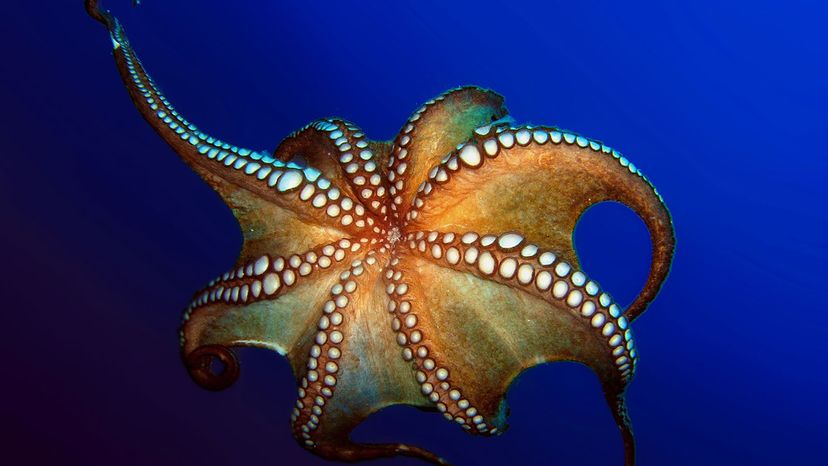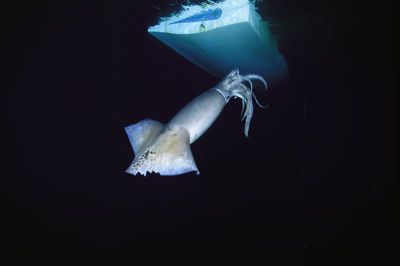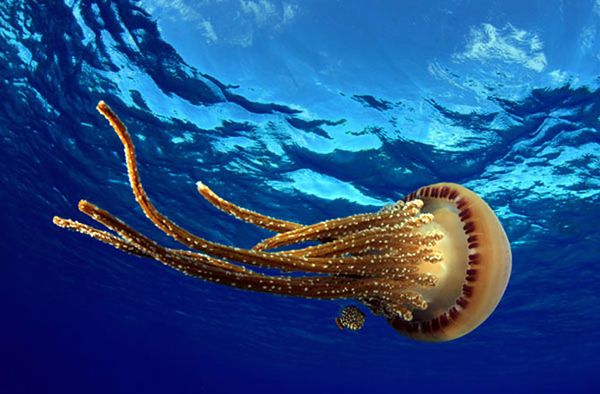
Many men cringe at the idea of dating women who are more than a few inches taller than they are. Imagine, then, how a man would feel about dating someone 100 times his size.
For the male pillow octopus, being dwarfed by your mate is simply a way of life. Full-grown male pillow octopuses are only a couple of centimeters long and weigh less than a gram. Meanwhile, the females can reach more than 6 feet (2 meters) and weigh 100 pounds (45.4 kilograms). That means a female is 40,000 times heavier than a male [source: Pickrell].
Advertisement
In human terms that would be like a man asking out a woman four times the size of the Statue of Liberty or a woman flirtatiously giving her phone number to a man the size of a beetle. Luckily for the male pillow octopus, however, mating isn't a full contact sport. Males of this species have a modified arm that contains long rows of sperm. He simply tears off this arm and politely hands it to his mammoth female mate, who then saves it for later use. The male pillow octopus has also been known to rip off the poisonous tentacles of Portuguese man-of-war jellyfish and wield them as make-shift swords to ward off predators. He can do this because he himself is immune to their sting.
The pillow octopus is just one fascinating example of the octopus order (octopoda), which is as varied as the different plural forms of its name. Octopi, octopods, octopuses and other variations are all used by scientists. Ranging in size from the one-fourth gram male pillow octopus to the record 600 pound (272 kilograms) plus giant Pacific octopus, this most advanced of invertebrates has flabbergasted and amused researchers for years.
That's not all. Octopus eyes are so advanced that camera manufacturers have used their eyes as a model to improve the camera lens. Until recently, because of the curve of a camera's lens, the picture often blurred at the edges. To correct this, nicer camera models often contained up to eight lenses, which was both bulky and expensive. Yet by copying the structure of an octopus eye, which has several thin layers of multiple densities to bend and focus light, camera manufacturers were able to create a camera lens that can now produce a clear picture – and the camera is cheaper to produce as well as smaller) [source: Helm].
You'll learn a whole lot more about octopuses in this article, including how a Seattle octopus earned herself the name Lucretia McEvil. But first, let's take a look at the octopus's unique body style.


